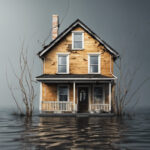
Water damage can wreak havoc on a property, causing extensive damage to the structure and leading to potentially dangerous situations. Whether it is due to a flood, burst pipe, or leaky roof, water damage needs to be addressed and restored promptly to prevent further damage and potential health hazards.
In this article, we will discuss 15 important water damage restoration tips that can help homeowners and property managers effectively manage and mitigate the effects of water damage.
1. Safety First: Before undertaking any water damage restoration activities, ensure your safety and the safety of others. Turn off the power supply to the affected area to avoid electrical hazards. Wear protective gear such as gloves, goggles, and masks to protect yourself from potential health hazards.
2. Assess the Extent of Damage: Thoroughly inspect the affected area to determine the extent of water damage. Identify the source of the water intrusion, whether it is from a leaking pipe, roof, or natural disaster, as this will help you determine the appropriate restoration process.
3. Act Quickly: Time is of the essence when it comes to water damage restoration. The longer the water sits, the more damage it can cause. Mold and mildew can start growing within 24 to 48 hours of water exposure, so it’s crucial to act promptly.
4. Document the Damage: Take photographs and videos of the affected area and damaged items to document the extent of the water damage. This will be essential for insurance claims and assistance from water damage restoration professionals.
5. Remove Standing Water: Pump out any standing water using a submersible pump or wet/dry vacuum. Be cautious while positioning electrical devices near water, and ensure you are wearing appropriate protective gear.
6. Dry the Area: After removing standing water, focus on drying out the affected area and items. Use dehumidifiers, fans, and open windows to promote airflow and expedite the drying process. Remove any wet items such as carpets, furniture, and clothing to a well-ventilated area for drying.
7. Clean and Disinfect: Water damage can introduce harmful microorganisms and contaminants into your property. Clean and disinfect all affected surfaces, including walls, floors, and personal belongings, using a mixture of water and mild detergent. Follow up with a disinfectant to kill any remaining bacteria or mold spores.
8. Salvageable Items: Separate salvageable items from irreparable ones. Items with sentimental or monetary value should be prioritized for restoration. Consult with professional restoration experts to assess the viability of salvaging damaged items.
9. Remove Mold and Mildew: Mold growth is a common consequence of water damage. Ensure thorough mold remediation by hiring professional mold specialists who can effectively identify and eliminate mold growth.
10. Prioritize Structural Repairs: Structural damage requires immediate attention, as it can compromise the stability and safety of the property. Contact a professional contractor experienced in water damage restoration for a thorough assessment and repairs.
11. Inspect Plumbing Systems: After addressing the immediate concerns, inspect your plumbing system for any potential leaks or weaknesses that may have caused the water damage. Repair any issues to prevent future water damage incidents.
12. Ventilation and Air Circulation: Proper ventilation and air circulation are essential to prevent the growth of mold and mildew. Install exhaust fans and ensure good airflow throughout your property, especially in areas prone to moisture accumulation.
13. Monitor Humidity Levels: Maintain optimal indoor humidity levels (around 30-50%) to prevent further mold growth. Use dehumidifiers and air conditioners to control the humidity in your property effectively.
14. Invest in Waterproofing Measures: To prevent future water damage incidents, invest in reliable waterproofing measures such as installing sump pumps, applying protective coatings to vulnerable areas, and sealing cracks in the foundation.
15. Seek Professional Help: Water damage restoration is a complex task that requires expertise and specialized equipment. Engaging professional water damage restoration services ensures that the restoration process is carried out efficiently, minimizing the risk of further damage and health hazards.
In conclusion, water damage restoration is not a simple task, and proper execution is crucial to prevent further property damage and health risks. Following these 15 important water damage restoration tips, homeowners and property managers can effectively manage water damage incidents and protect their property and occupants. Remember, safety should always be the top priority, so do not hesitate to seek professional help whenever needed.






